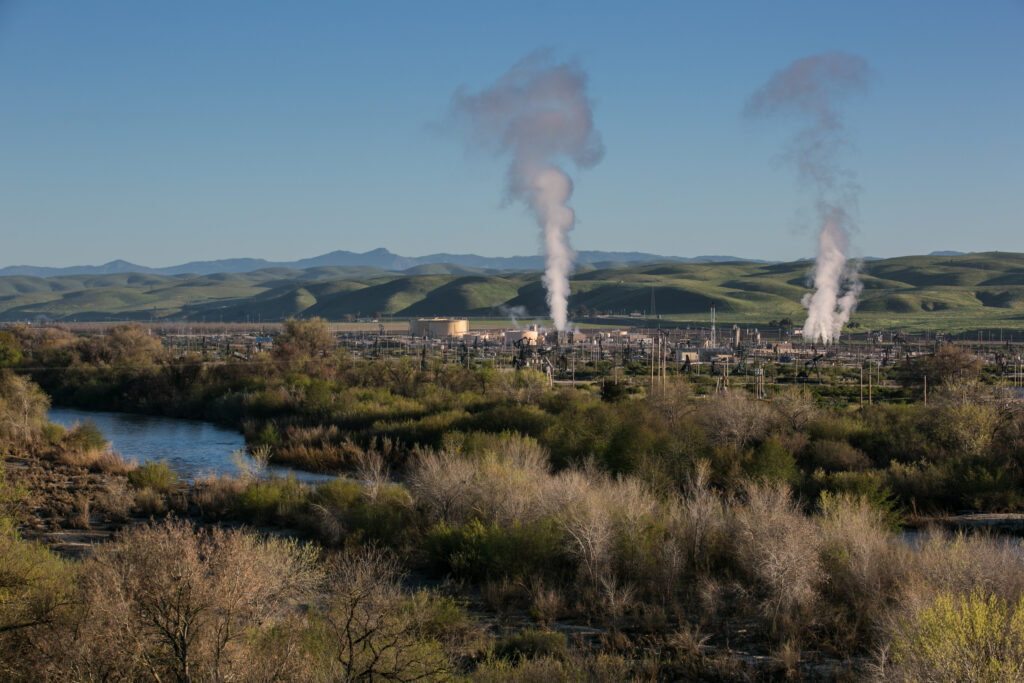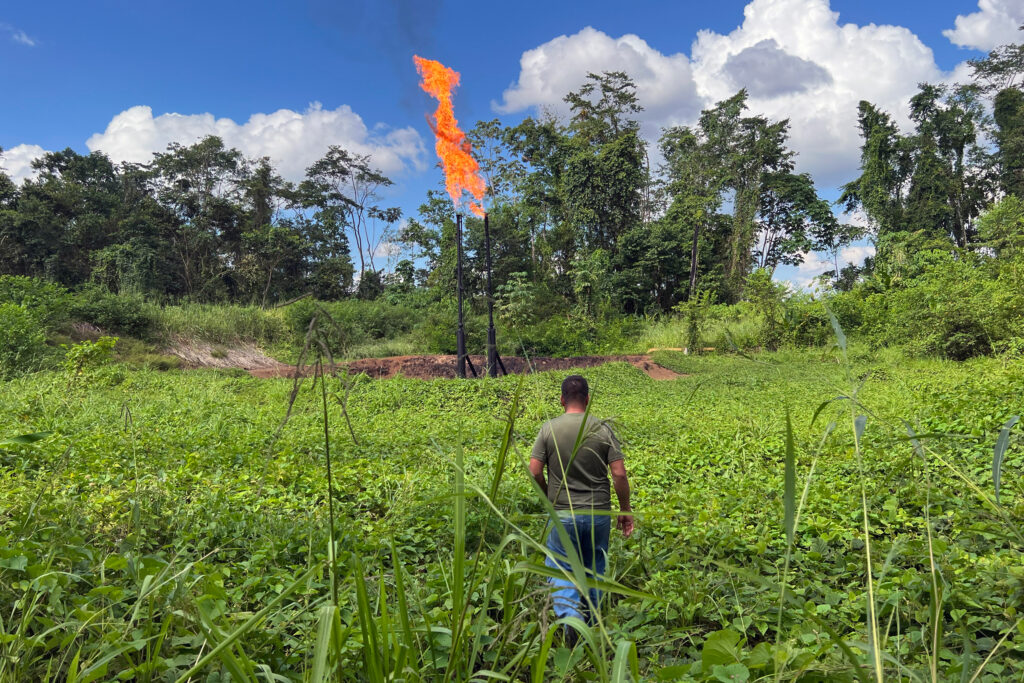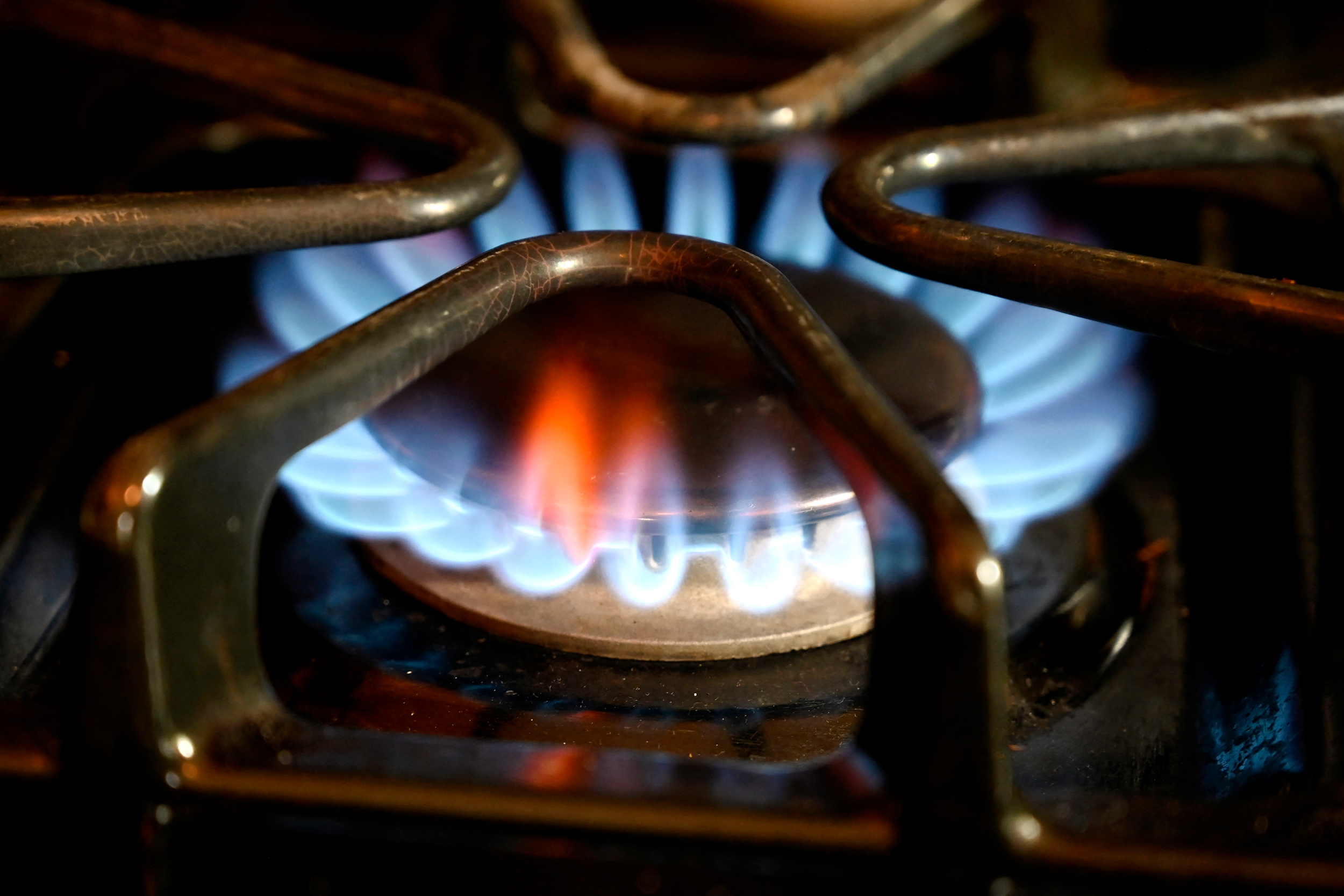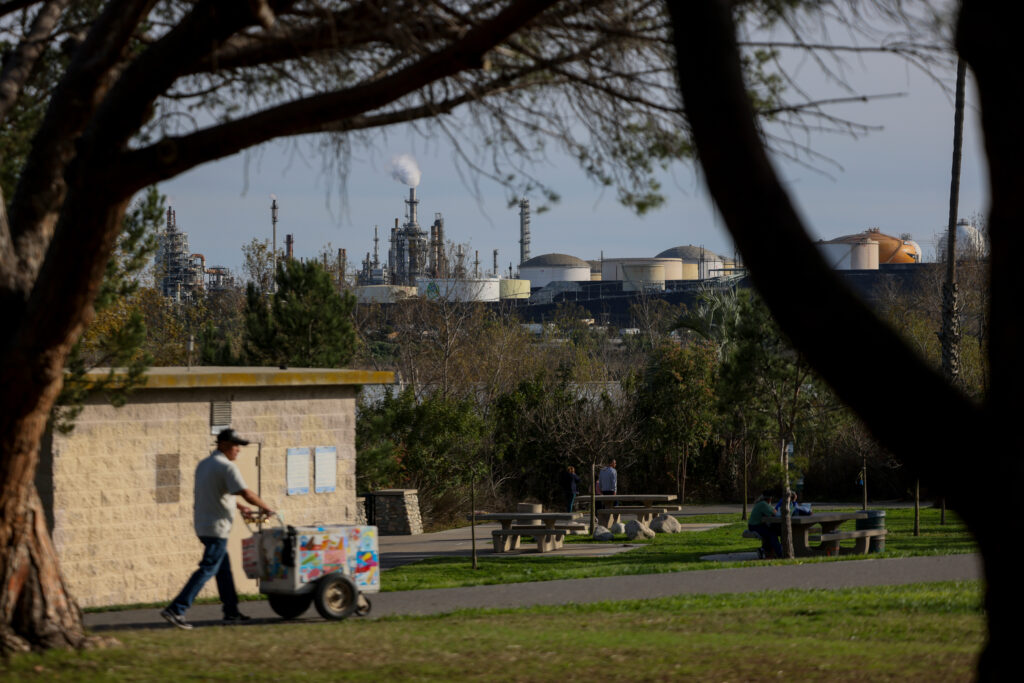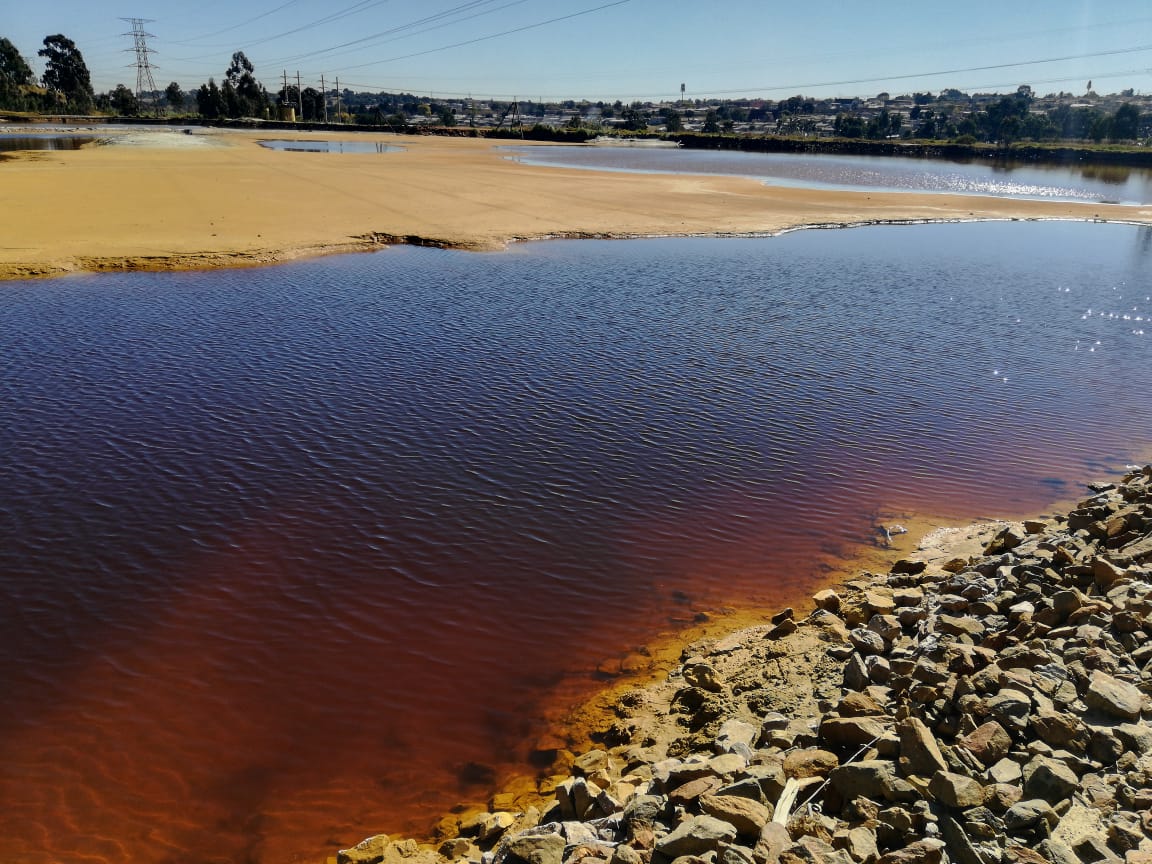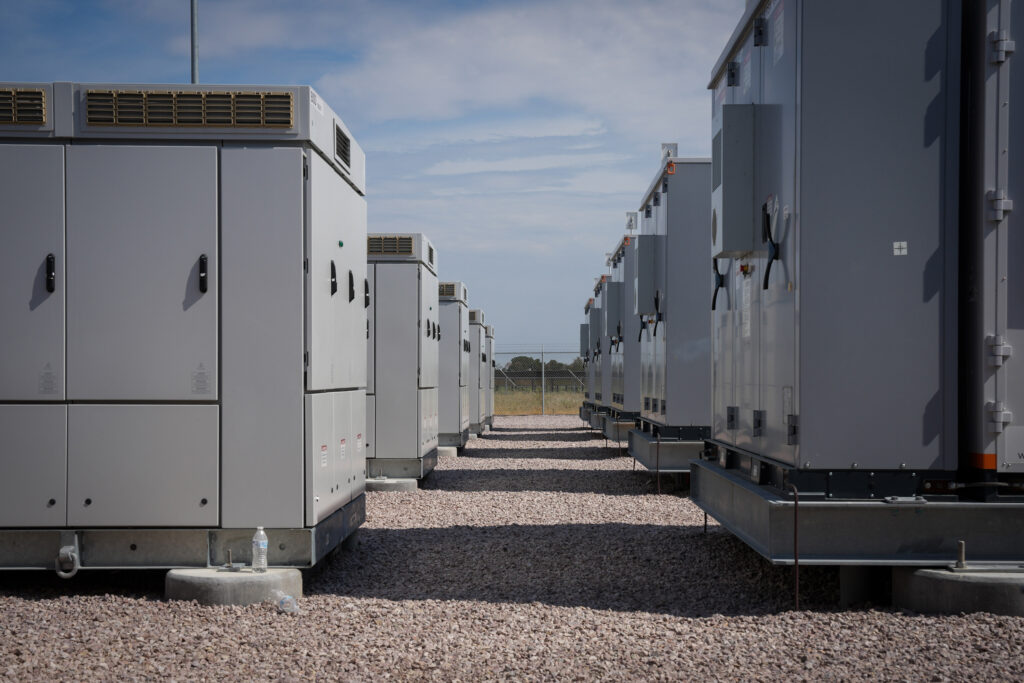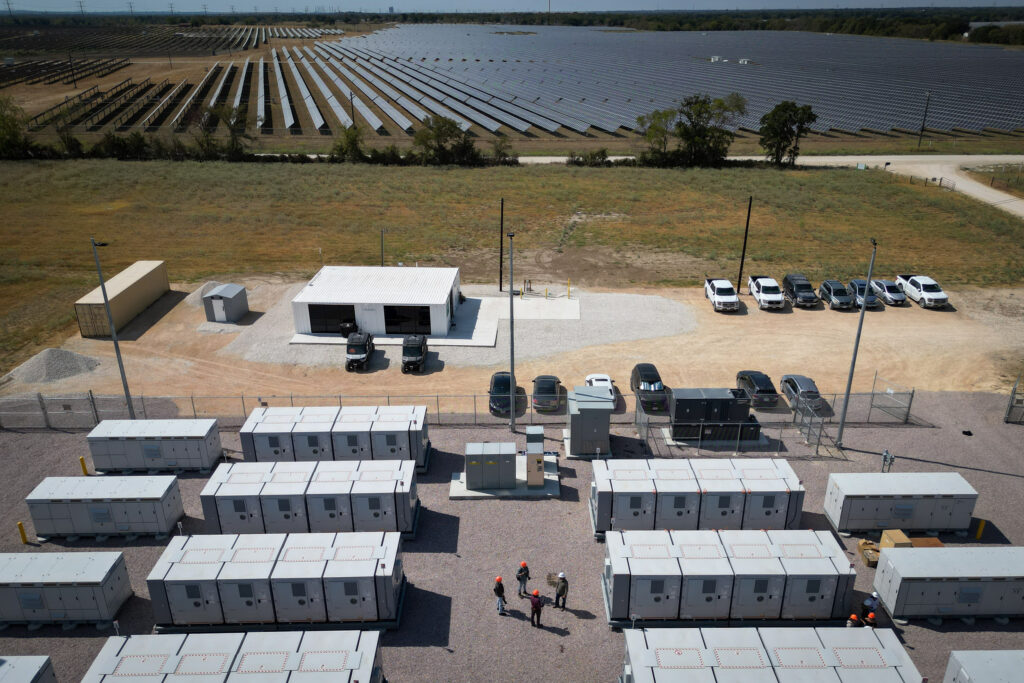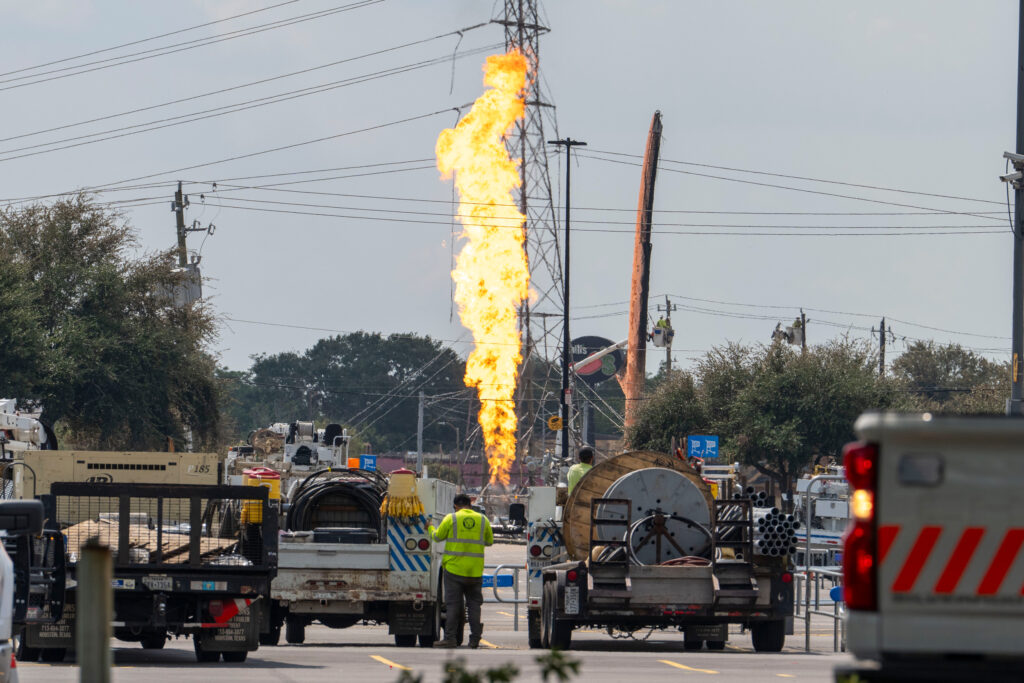Maryland’s top environmental groups are pushing back against a legislative proposal that endorses gas-fired power plants as a key solution to the state’s predicted energy shortfall.
Prioritizing gas generation is a significant step backward, they argue, blaming the regional grid operator, PJM Interconnection, for years of mismanagement that led to this point.
At the same time, a nuclear energy bill Gov. Wes Moore’s administration endorsed has divided advocates. Some organizations see nuclear as a workable, carbon-free alternative, while grassroots groups reject it as an expensive distraction from Maryland’s renewable energy targets.
Adding to their frustration is an order from the Federal Energy Regulatory Commission this week, granting PJM’s request to allow gas-powered plants to move to the front of the interconnection queue. Environmental leaders criticized the decision, saying the move further tilts the scales against renewables and reinforces a system that prioritizes fossil fuels over clean energy solutions.
We’re hiring!
Please take a look at the new openings in our newsroom.
See jobs
“This is a blatant setback for Maryland’s clean energy transition,” said Carlos Sanchez of the Maryland chapter of the Sierra Club. “FERC is allowing dirty energy to cut the line while thousands of megawatts of wind and solar remain stuck in bureaucratic limbo.”
At a press briefing Wednesday, leaders from the Sierra Club, the Chesapeake Climate Action Network and the Maryland League of Conservation Voters criticized top Maryland lawmakers for including gas-fired power plants as a viable option in a package of energy bills floated last week by Senate President Bill Ferguson (D-Baltimore City) and House Speaker Adrienne Jones (D-Baltimore County).
The “2025 Leadership Legislative Package” consists of three separate bills and has the backing of the state’s top lawmakers. It includes the Next Generation Energy Act, championed by Ferguson and Jones, which promotes new in-state power generation—including gas-fired and nuclear energy—to replace retiring coal and oil plants.
The act mandates the approval of “dispatchable generation” projects, which refers to power sources that can be adjusted when needed to meet electricity demand, ensuring grid stability. It also establishes a procurement process for nuclear power and requires that new gas plants be hydrogen-convertible and fitted with carbon capture technology at a later, unspecified stage.
The Renewable Energy Certainty Act, led by Sen. Brian Feldman (D-Montgomery) and Del. C.T. Wilson (D-Charles), streamlines permitting for solar and battery storage projects. The Energy Resource Adequacy and Planning Act, sponsored by Sen. Katie Fry Hester (D-Howard and Montgomery) and Del. Brian Crosby (D-St. Mary’s), reestablishes long-term energy planning within the Public Service Commission to reduce reliance on PJM and ensure Maryland meets its climate targets.
A three-page brief legislators shared with advocates earlier this month warned that Maryland faced a potential electricity shortage as soon as June 2026. The alleged shortfall was driven by surging demand from data centers, broader electrification and the retirement of coal and oil plants. The brief cited PJM as saying limited solar and wind capacity, along with high battery storage costs, are major obstacles to meeting this demand.
“New dispatchable generation, likely natural gas and expanded nuclear, is the only short-term option,” the legislators’ brief stated, proposing that new gas plants could later convert to hydrogen and nuclear development could expand with small modular reactors.

While the lawmakers presented gas-fired power as a pertinent option, environmental advocates rejected the premise outright.
“Maryland voters will be shocked to learn that some lawmakers in Annapolis are considering policies to build a large gas-fired power plant or two,” said Mike Tidwell, executive director of the Chesapeake Climate Action Network. “We have not seen any independent modeling showing that this would be cheaper than investing in battery storage, energy efficiency and solar.”
According to Tidwell, three gigawatts of new gas capacity—roughly equal to the retiring coal and oil plants—could cost between $3 billion and $4 billion, translating to approximately $2,500 per Maryland family. “Maryland banned fracking in 2017 due to its health and environmental risks, yet now considers building gas plants that would rely on fracked gas from other states—shifting the burden it once rejected,” he said.
The offices of Ferguson and Jones did not respond to multiple requests for comment.
Environmental leaders laid the blame on PJM for creating the crisis through years of faulty planning and flawed capacity market rules that failed to account for data center growth and the clean energy transition. “Coal plants are closing because they’re uneconomical,” Sanchez said. “Yet PJM has failed to approve the renewables needed to replace them and is now pushing gas as the solution.”
“This is a double squeeze on Maryland,” said Kim Coble, executive director of the Maryland League of Conservation Voters. “Not only are we being pushed toward gas, but the renewable projects we should be advancing are being held back. The freeze on those projects must be lifted immediately.”
They urged Maryland lawmakers to accelerate renewable energy projects instead of locking the state into new fossil fuel investments. “We need to prioritize clean, less expensive alternatives through legislation,” Tidwell said. “PJM helped create this crisis, and now they’re offering flawed solutions that will only drive up costs.”
According to advocacy groups, more than 7,000 megawatts of solar and battery storage are in PJM’s connection queue. FERC’s approval of PJM’s fast-tracking plan for new gas plants will further delay the renewable projects, they say.
This story is funded by readers like you.
Our nonprofit newsroom provides award-winning climate coverage free of charge and advertising. We rely on donations from readers like you to keep going. Please donate now to support our work.
Donate Now
Jeffrey Shields, a PJM spokesperson, previously told Inside Climate News that the grid operator expects to process more than 200,000 megawatts of mostly renewable projects across its 13-state region in the next three years. “We continue to fast-track new resources, but renewable projects are not being built fast enough to keep up with the retirement of existing resources due to alleged siting, supply-chain or other challenges outside PJM’s interconnection process.”
Shields also defended including nuclear energy in the regional energy mix. “It is not acceptable for any stakeholder to allow the grid to fail based on financial or policy interests. We need to use every tool in the toolbox to prevent that outcome,” he said.
Faced with the prospects of an impending energy crunch and soaring electricity prices, some legislators view nuclear energy as a long-term, low-emission investment in grid stability.
But critics argue that nuclear projects remain exorbitantly expensive and slow to deploy. This reality check has deepened divisions among Maryland’s environmental advocates, fueling a contentious debate over whether nuclear should be included in the state’s clean energy strategy.
At the center of the split is the Empowering New Energy Resources and Green Initiatives Toward a Zero-Emission (ENERGIZE) Maryland Act, a Moore administration-backed bill that redefines the state’s Renewable Portfolio Standard as a Clean Energy Portfolio Standard and expands the definition of clean energy to include nuclear power. The bill also establishes a new approval process for nuclear projects, requiring community benefit agreements and minority business participation. Other provisions include support for offshore wind and necessary transmission infrastructure.
The Chesapeake Climate Action Network and the Maryland League of Conservation Voters are both open to keeping nuclear options as part of Maryland’s energy mix.
“Maryland already gets 40 percent of its in-state generation from Calvert Cliffs nuclear facility,” Coble said. “It’s a carbon-free emitting energy source, and that’s exactly the direction we need to be heading.”
However, she cautioned that new nuclear projects would be expensive and slow to develop. “Any new investment seems counterproductive, especially given the backlog of renewables that could be deployed within five years—long before small modular reactors come online.”
“Ratepayers in Georgia saw their bills increase nearly 25 percent to pay for nuclear reactors that took 18 years and $37 billion to complete.”
— Tim Judson, Nuclear Information and Resource Service
In emailed remarks, Carter Elliott IV, spokesperson for the governor’s office, said that the Moore administration is exploring all available options, including nuclear energy, to help meet Maryland’s environmental and clean energy goals.
“The governor understands the need for sustainable and cost-effective infrastructure to ensure the reliability of our grid and build the economy of the future in our state, which is why this session he has introduced the ENERGIZE Act, to help create more in-state clean energy generation, invest in Maryland’s workforce and help Maryland ratepayers,” the statement said.
Grassroots advocates remain skeptical, warning that nuclear investments would divert resources from faster, more affordable clean energy solutions.
“State leaders’ apparent embrace of new nuclear power and fracked gas plants is an alarming sign for Maryland’s clean energy future,” said Jorge Aguilar, a regional director for Food & Water Watch. “Gov. Moore and the legislature should not be investing in polluting industries that will only raise utility rates for all Marylanders long-term.”
Tim Judson of the Nuclear Information and Resource Service, which advocates for energy systems without carbon or nuclear, argued that nuclear plants take at least 15 years to plan and build and are prohibitively expensive. “Ratepayers in Georgia saw their bills increase nearly 25 percent to pay for nuclear reactors that took 18 years and $37 billion to complete,” he said.
Judson thinks realistic cost estimates and schedules would likely prevent nuclear projects from ever being approved. “Solar and wind projects rarely go over budget and take far less time to build. Our problem in Maryland is that Annapolis sets goals but provides no enforcement. That’s what we need to fix.”
Gwen DuBois, president of Chesapeake Physicians for Social Responsibility, echoed Judson’s concerns about costs and time. “It’s best to focus on solar, wind, hydroelectric and battery storage,” she said. “We could accomplish much more in less time with fewer resources.”
About This Story
Perhaps you noticed: This story, like all the news we publish, is free to read. That’s because Inside Climate News is a 501c3 nonprofit organization. We do not charge a subscription fee, lock our news behind a paywall, or clutter our website with ads. We make our news on climate and the environment freely available to you and anyone who wants it.
That’s not all. We also share our news for free with scores of other media organizations around the country. Many of them can’t afford to do environmental journalism of their own. We’ve built bureaus from coast to coast to report local stories, collaborate with local newsrooms and co-publish articles so that this vital work is shared as widely as possible.
Two of us launched ICN in 2007. Six years later we earned a Pulitzer Prize for National Reporting, and now we run the oldest and largest dedicated climate newsroom in the nation. We tell the story in all its complexity. We hold polluters accountable. We expose environmental injustice. We debunk misinformation. We scrutinize solutions and inspire action.
Donations from readers like you fund every aspect of what we do. If you don’t already, will you support our ongoing work, our reporting on the biggest crisis facing our planet, and help us reach even more readers in more places?
Please take a moment to make a tax-deductible donation. Every one of them makes a difference.
Thank you,




